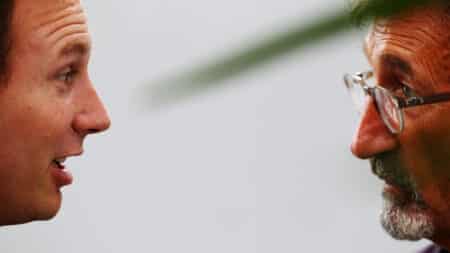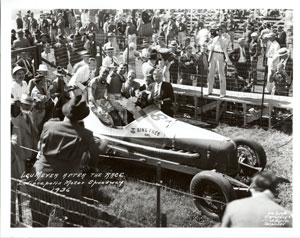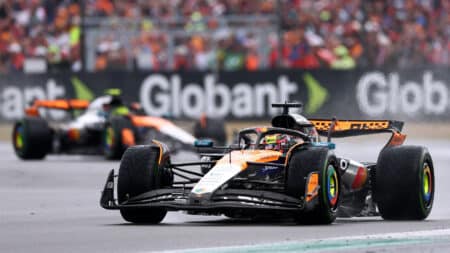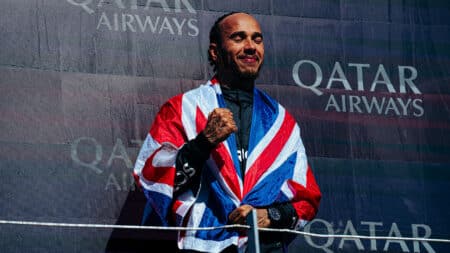
Horner's departure shows age of the maverick F1 boss is over
Christian Horner has now left Red Bull, the last of a certain breed of F1 team principal

The first triple winner of the Indianapolis 500 was Louis Meyer, who won the great race in 1928, ‘33 and ‘36. In fact, he started a dozen 500s between 1928-39. Raised in Los Angeles, Meyer first went to Indianapolis in 1926 as a mechanic for Miller driver Frank Elliott. The following year Elliott entered Meyer in a spare car but it was sold during the month of May and a local driver, Wilbur Shaw, made his rookie start in it instead. Meyer continued as the car’s mechanic and drove relief for Shaw near the end of the race, finishing fourth.
In 1928 Meyer made his formal rookie start at Indy driving one of eight factory Millers. He qualified 13th and drove a fast, steady race. Running third in the closing stages Meyer suddenly found himself in the lead with 18 laps to go after Tony Gulotta’s Miller and Jimmy Gleason’s Duesenberg hit trouble. He won by half a lap from another rookie, Lou Moore.
The following year Meyer looked like winning again until he stalled his engine during his final pitstop, losing seven minutes before he could restart and finishing fourth. In 1930 he qualified second and again finished fourth, then won for a second time in 1933, beating Shaw and Moore. Meyer’s third win came in 1936 after a difficult month with a series of engine problems. He didn’t qualify until the final day and started 28th, but after leader Shaw ran into trouble with loose bodywork Meyer was able to score a convincing victory over Ted Horn. In his last 500 Meyer was running second with two laps to go when he hit the wall trying to catch winner Shaw.
After World War II Meyer and Dale Drake bought Fred Offenhauser’s engine-building operation. Kelly Petillo had scored the first 500 victory for an Offenhauser-powered car in 1935 after Fred Offenhauser took over Harry Miller’s bankrupt business, and Meyer-Drake Engineering continued to build the venerable Miller-based four-cylinder for over a third of a century. The Offy dominated AAA and USAC championship racing through the 1950s and into the ’60s, and enjoyed a second life in turbocharged form through the ’70s. Meyer died in 1995 at the ripe old age of 91.
The second man to win three Indy 500s was Wilbur Shaw, who scored his first win in 1937 driving his own sleek Gilmore/Shaw-Offy. Shaw finished second in 1933, ‘35 and ’38, and then scored back-to-back wins in 1939-40 driving Mike Boyle’s twin supercharged Maserati Grand Prix car. He was leading again aboard the Maserati in 1941 when a wire wheel collapsed and he crashed, injuring his back. Shaw led 508 laps at Indianapolis between 1932-41, second only to Ralph De Palma at the time.
Shaw’s 1941 accident at the Speedway and the arrival of WWII brought an end to his driving career. But he was a charming, outgoing man, and when Eddie Rickenbacker decided to sell the derelict Indianapolis Motor Speedway after the war Shaw convinced Tony Hulman to buy it. Had Shaw not done so the track might have been closed, but instead he helped usher in a new era as Hulman began to rebuild and modernise the ageing circuit.
Hulman appointed Shaw as president and general manager, and Shaw ran the place until he was killed in an airplane crash in October, 1954. A native Hoosier from nearby Shelbyville, Indiana, Shaw is reckoned to be one of the most influential figures in the Speedway’s great history.

Christian Horner has now left Red Bull, the last of a certain breed of F1 team principal

Was Oscar Piastri the real winner in the long run after Silverstone? asks James Elson

Lewis Hamilton hadn't won in almost three years – and then produced a sensational victory at Silverstone 2024. James Elson explains why it was his best ever

Describing this year's championship race as a 'battle' might be slightly over-egging it, writes James Elson